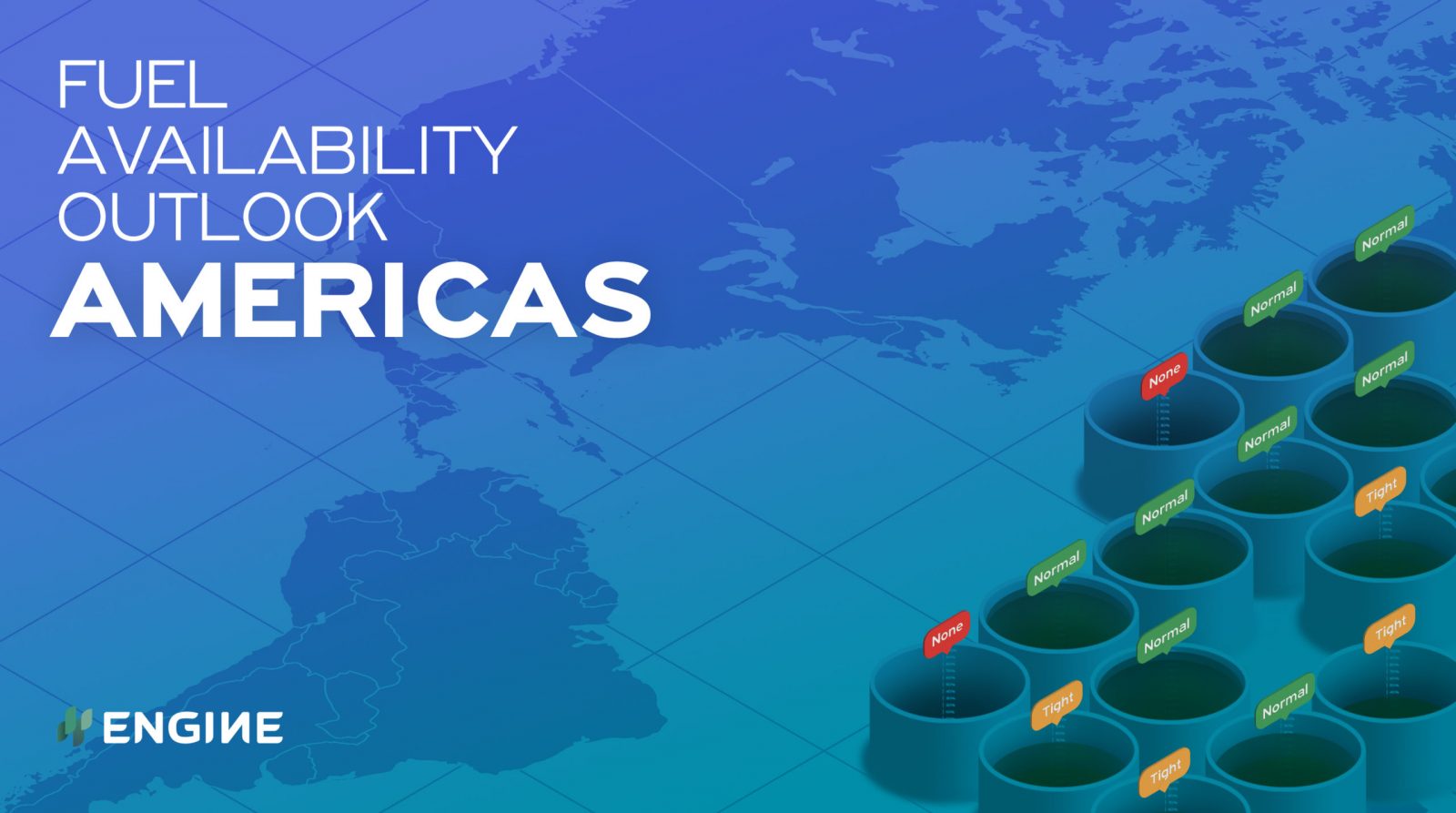• Above-average US fuel oil stocks, below-average distillate stocks
• Prompt VLSFO readily available in Argentina and Brazil
• Rough weather headed to GOLA, Trinidad and Zona Comun
North America
Buyers have been looking to start the bunker procurement process further ahead in recent weeks, sources say. Both to have their ducks in a row to fix stems when the market has trended down, and to ensure fuel availability for their targeted dates. But availability has not been tight to the extremes of late, except for in a couple of locations such as Panama and Trinidad.
VLSFO and LSMGO grades are generally in good supply with suppliers in the Houston area, while HSFO can be tighter and requires around a week of lead time with one supplier.
A period of strong winds and swells between Sunday and Monday could disrupt bunkering at the Galveston Offshore Lightering Area (GOLA).
LSMGO and HSFO availability prospects in New York vary between suppliers. One can deliver the grades with 3-5 days of lead time, another in seven days, while one needs 12 days.
Suppliers in Los Angeles, Long Beach and other US West Coast ports can accommodate prompt stems. The earliest delivery dates for VLSFO and LSMGO with two suppliers in San Francisco range between 4-6 days out.
US residual fuel oil stocks have grown beyond their position at this time last year, and also above their five-year average. Fuel oil inventories averaged 2% higher in the first three weeks of July compared to the whole of June, Energy Information Administration (EIA) figures show. A 71,000 b/d drop in supply out of storage – implied demand – has supported stock levels over this period.
Imports have dropped by 95,000 b/d on the month in July. Mexico has been the US’ biggest import source since April, when Russian inflows were phased out with an embargo. US importers increasingly looked towards Mexico and the Middle East to replace Russian barrels. Algeria became its second-biggest fuel oil source in May and June, while the UAE has taken that spot in July.
A sustained period of high refinery runs has yielded more fuel oil as a by-product and supported the stock build. US refinery utilisation has averaged above 90% since the end of April. Utilisation was ramped up further from mid-May, especially on the East Coast (97-99%) and Gulf Coast (95-98%), while to a lesser extent on the West Coast (81-90%).
The 257,000 b/d capacity Richmond refinery on the West Coast is slated for a six-week crude distillation (CDU) maintenance that started 15 June, according to Wood Mackenzie, which should have held back the region’s utilisation rates.
The country’s distillate stocks remain considerably below both their level a year ago and their five-year average. East Coast distillate stocks have regained some weight after slumping to record lows in late May. This has been reflected in improved availability in East Coast bunker ports like New York.
Caribbean and Latin America
VLSFO can be tight in Panama, especially in Cristobal where there are considerably fewer barges delivering fuel than on the Balboa side. A supplier has no availability in Cristobal for the coming week, but can supply in Balboa. Around seven days of lead time has been advised for stems of any grade in Balboa.
Supply prospects can be patchy off Trinidad as one supplier has a barge out for drydock and no availability. Another supplier has one barge in operation, which will head to a terminal to reload product in early August and could be unavailable for deliveries for the next 11-13 days.
High winds and swells are forecast off Trinidad between Saturday and Monday, possibly holding back bunker operations.
Prompt availability is good in Zona Comun and Brazilian ports. VLSFO can be delivered in Santos with three days of lead time. VLSFO and LSMGO can be delivered by a supplier in Zona Comun with 3-4 days or less of lead time.
Zona Comun has strong winds and swells forecast on Thursday and Friday, which could halt bunker deliveries. Bunkering has been suspended by rough weather at the anchorage on two occasions in the past week.






